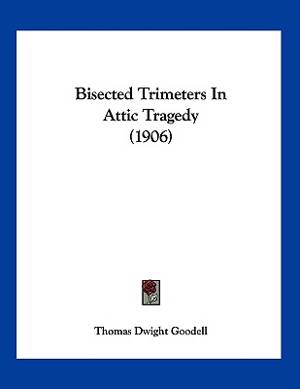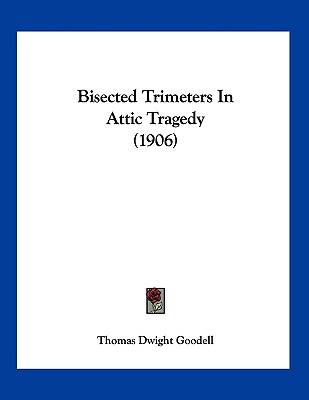
- Afhalen na 1 uur in een winkel met voorraad
- Gratis thuislevering in België vanaf € 30
- Ruim aanbod met 7 miljoen producten
- Afhalen na 1 uur in een winkel met voorraad
- Gratis thuislevering in België vanaf € 30
- Ruim aanbod met 7 miljoen producten
Zoeken
€ 28,45
+ 56 punten
Omschrijving
Bisected Trimeters In Attic Tragedy is a book written by Thomas Dwight Goodell and originally published in 1906. The book is an in-depth analysis of the use of bisected trimeters in ancient Greek tragedy, specifically in the works of Aeschylus, Sophocles, and Euripides. Goodell examines the structure, rhythm, and meaning of these verses, which are known for their distinctive use of caesura, or a pause in the middle of a line. The book includes detailed examples and explanations of the use of bisected trimeters in various plays, as well as discussions of their historical context and significance. This book is a valuable resource for scholars and students of ancient Greek literature, as well as anyone interested in the technical aspects of poetic form.This scarce antiquarian book is a facsimile reprint of the old original and may contain some imperfections such as library marks and notations. Because we believe this work is culturally important, we have made it available as part of our commitment for protecting, preserving, and promoting the world's literature in affordable, high quality, modern editions, that are true to their original work.
Specificaties
Betrokkenen
- Auteur(s):
- Uitgeverij:
Inhoud
- Aantal bladzijden:
- 28
- Taal:
- Engels
Eigenschappen
- Productcode (EAN):
- 9781120164292
- Verschijningsdatum:
- 24/09/2009
- Uitvoering:
- Paperback
- Formaat:
- Trade paperback (VS)
- Afmetingen:
- 216 mm x 279 mm
- Gewicht:
- 117 g

Alleen bij Standaard Boekhandel
+ 56 punten op je klantenkaart van Standaard Boekhandel
Beoordelingen
We publiceren alleen reviews die voldoen aan de voorwaarden voor reviews. Bekijk onze voorwaarden voor reviews.











